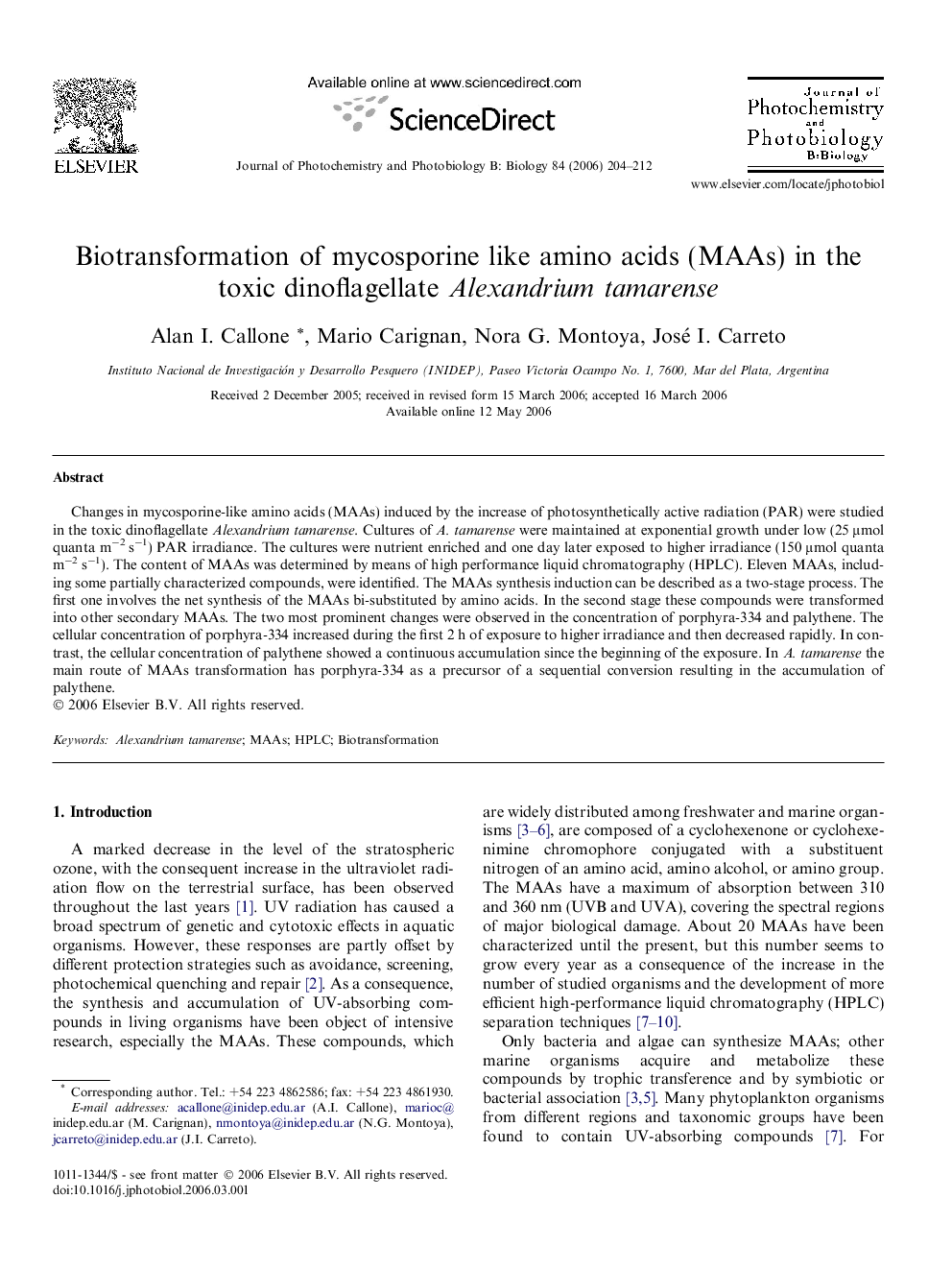| Article ID | Journal | Published Year | Pages | File Type |
|---|---|---|---|---|
| 30614 | Journal of Photochemistry and Photobiology B: Biology | 2006 | 9 Pages |
Changes in mycosporine-like amino acids (MAAs) induced by the increase of photosynthetically active radiation (PAR) were studied in the toxic dinoflagellate Alexandrium tamarense. Cultures of A. tamarense were maintained at exponential growth under low (25 μmol quanta m−2 s−1) PAR irradiance. The cultures were nutrient enriched and one day later exposed to higher irradiance (150 μmol quanta m−2 s−1). The content of MAAs was determined by means of high performance liquid chromatography (HPLC). Eleven MAAs, including some partially characterized compounds, were identified. The MAAs synthesis induction can be described as a two-stage process. The first one involves the net synthesis of the MAAs bi-substituted by amino acids. In the second stage these compounds were transformed into other secondary MAAs. The two most prominent changes were observed in the concentration of porphyra-334 and palythene. The cellular concentration of porphyra-334 increased during the first 2 h of exposure to higher irradiance and then decreased rapidly. In contrast, the cellular concentration of palythene showed a continuous accumulation since the beginning of the exposure. In A. tamarense the main route of MAAs transformation has porphyra-334 as a precursor of a sequential conversion resulting in the accumulation of palythene.
